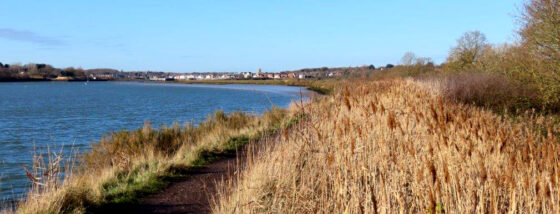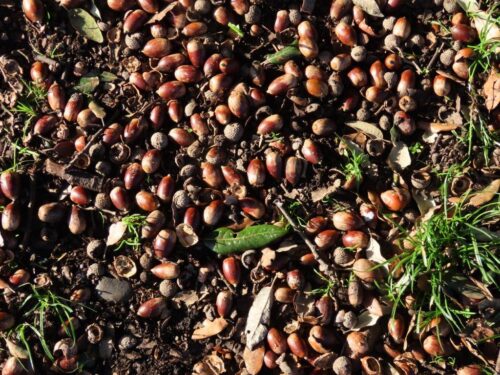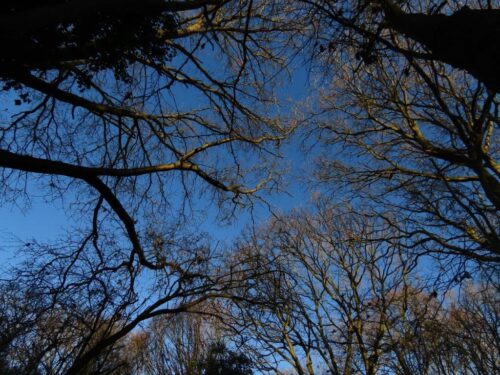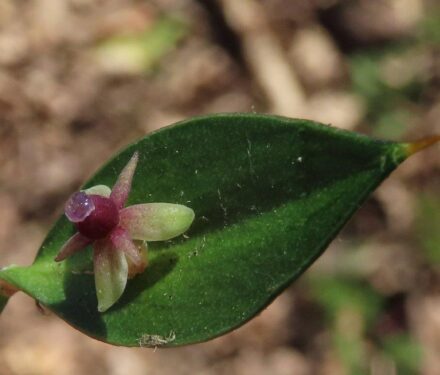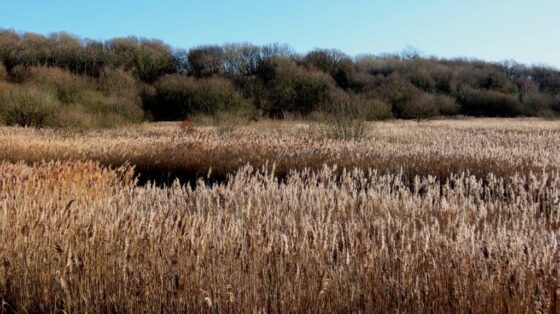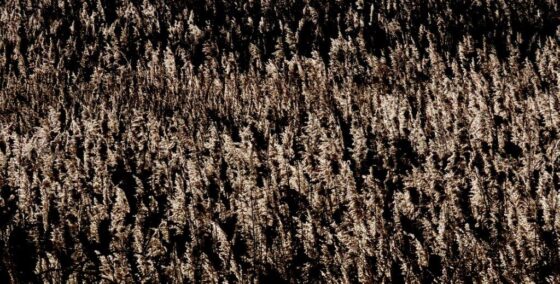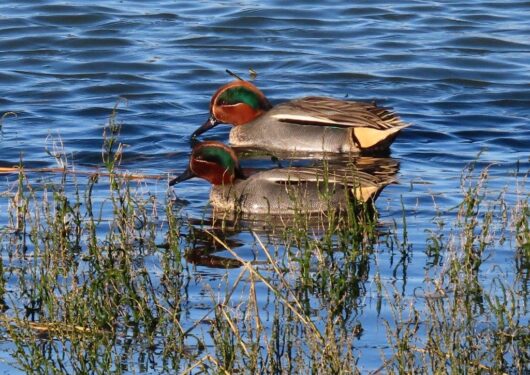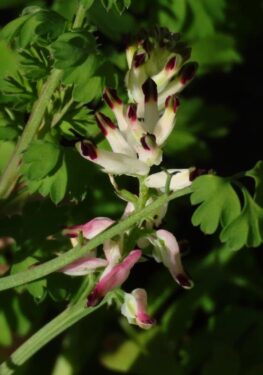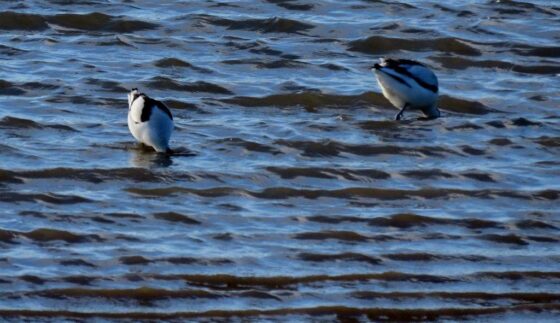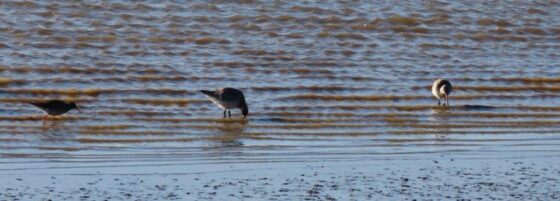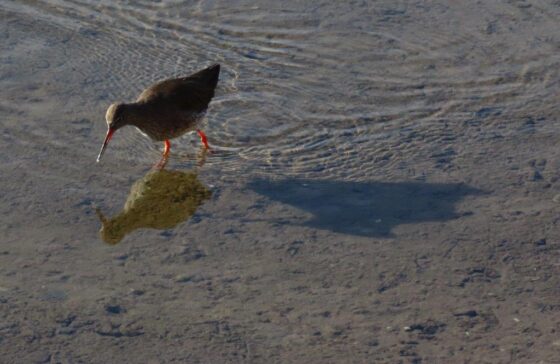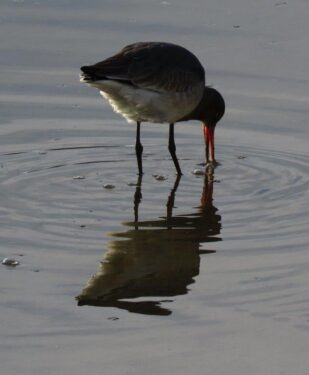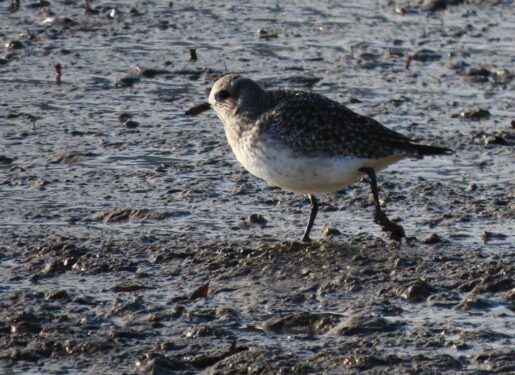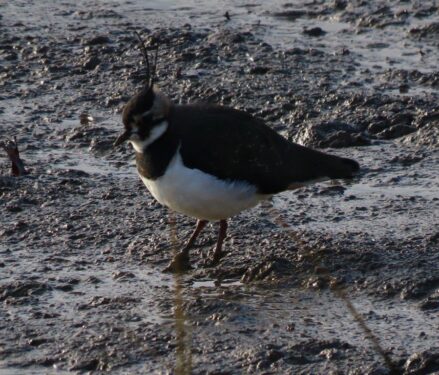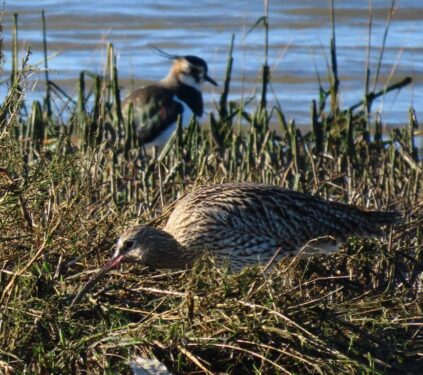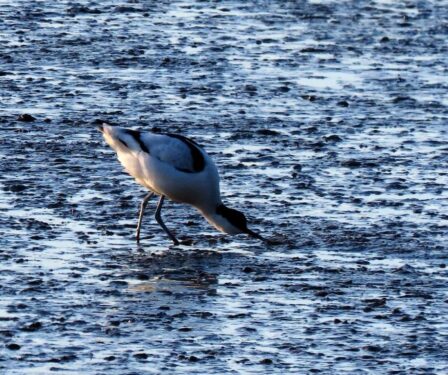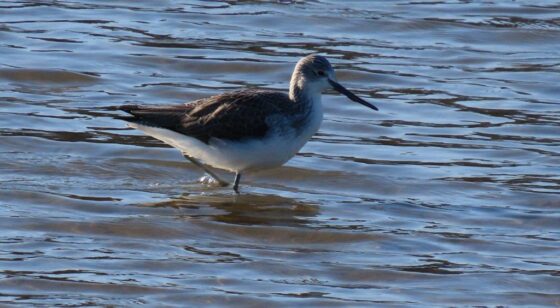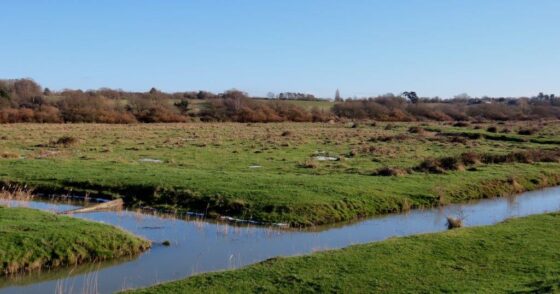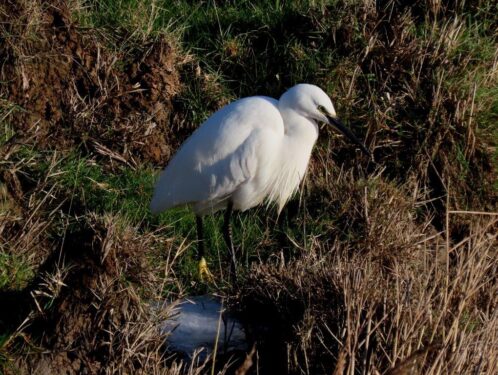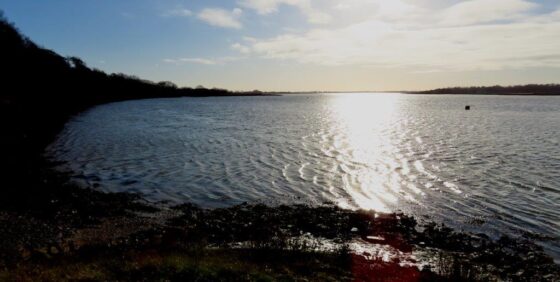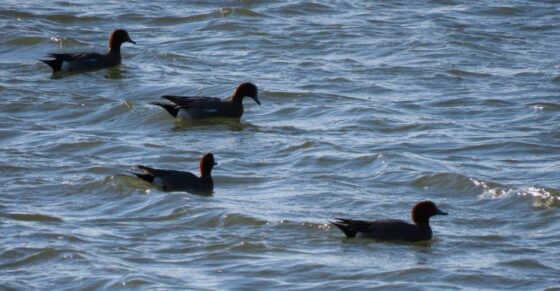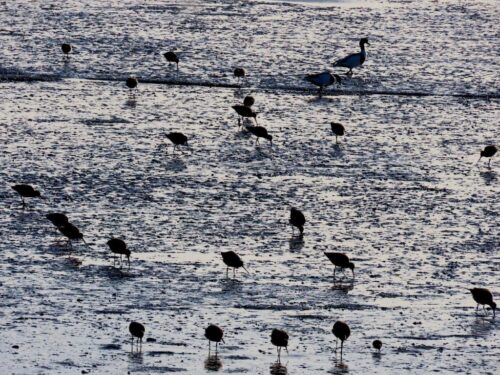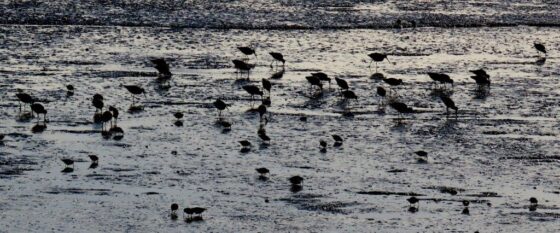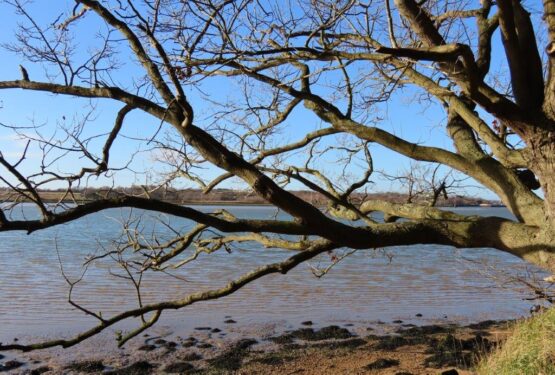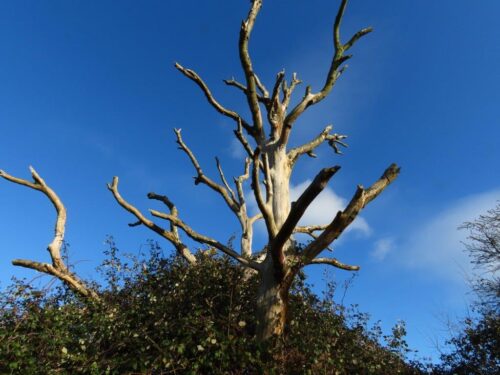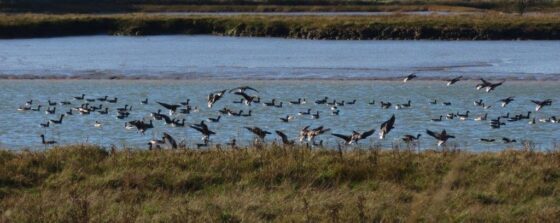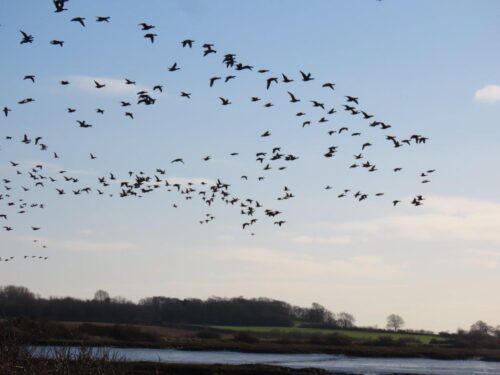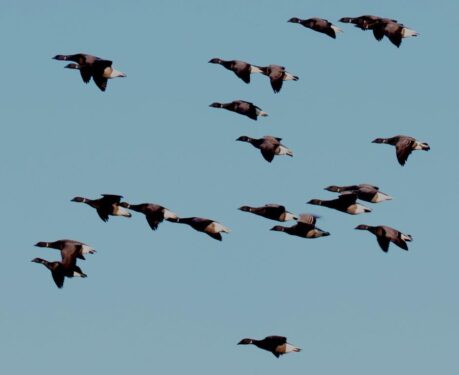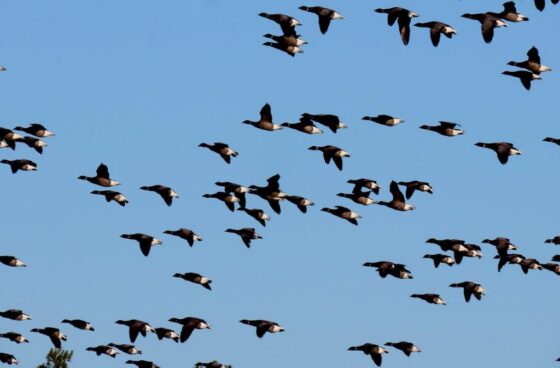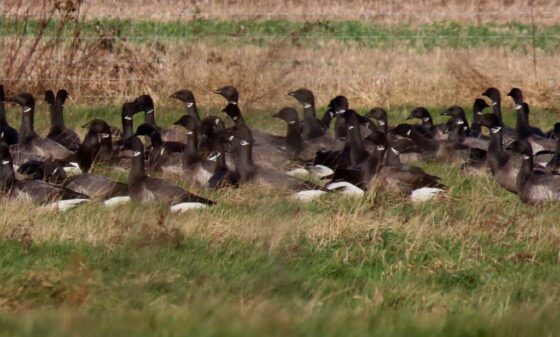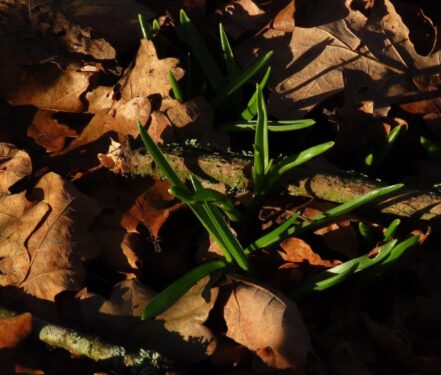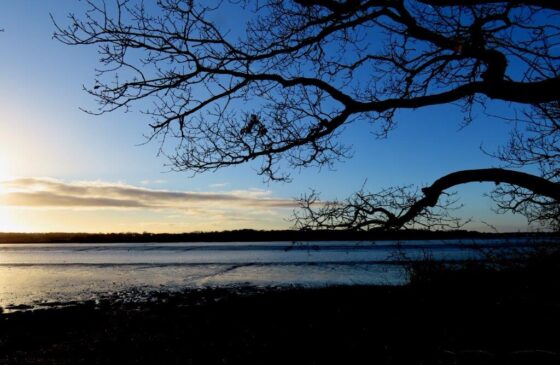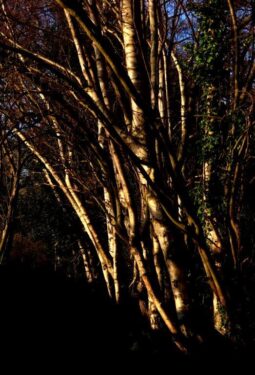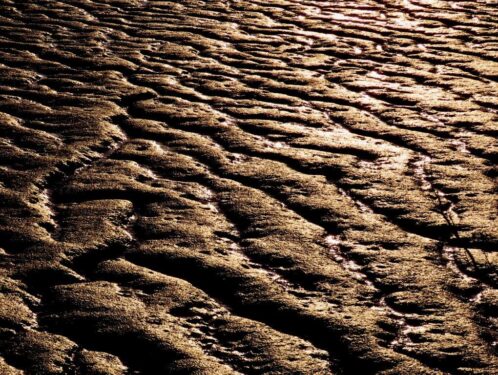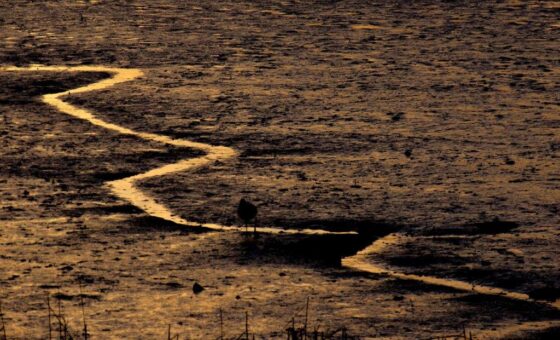The day dawned crisp and bright, and so it remained all day – at least the frozen ground meant it was not too muddy! Well wrapped up, our intrepid group headed first across the King George V field, where frost-crisped grass gave way to the crunch underfoot of the Holm Oaks, after last summer’s mast, a sign of the climate times.
Into Wivenhoe Wood, where we were soon immersed in the roving mixed tit bands, along with raucous Jays and frisky Great Spotted Woodpeckers, and enjoying the hidden floral delights of Butcher’s-broom.
Round Ferry Marsh the reedbeds were quiet save for a distant Cetti’s Warbler, but the silky seedy reedscape, glistening in the low sun, made up for the lack of birds, as did the confiding Teals on the tidal river.
It was high tide as we walked along Wivenhoe Waterfront, with just the local gulls to be seen, together with our only other noteworthy flowering plant of the day, our local speciality White Ramping Fumitory.
Out into the open estuary, and following the tide down, at first the limited mid fringes meant few birds, but those we did see were extremely close, habituated to pedestrians on the sea walls and unwilling to fly and waste precious energy. And what a selection: Black-tailed Godwits, Avocets, Grey Plovers, Curlews, Redshanks, Lapwings and even a single Greenshank, most unexpected at this time of year on this estuary.
Looking inland across the grazing marsh strewn with frost-highlighted ant-hills, we could see a Little Egret, a few Meadow Pipits, flighting flocks of Lapwings and a territorial pair of Buzzards soaring over the Essex Alps…
Continuing down, wader numbers grew as more mud was exposed, Dunlins entered the picture, as so did wildfowl, especially Wigeons.
Whitehouse Beach, flanked by the skeletons of dead Elms, for lunch as the waterfowl flocks grew, although a rising brisk breeze that lowered the temperature a good few degrees meant we didn’t linger long. Long enough though to marvel at the Brent Geese as they moved off the fields onto the channel.
For the next hour the Brents were everywhere, on the water, in the fields, and always overhead in burbling constellations, the epitome of the Essex Coast in winter. And in the region of 1% of the total world population!
Ascending the Essex Alps up Ford Lane, we picked up a male Marsh Harrier quartering the gravel workings, and a few minutes later a female Peregrine swept over and down to the estuary. One or other may way well have disturbed the geese, their glorious cacophony impressive even at a distance. Along the edge of Grange Wood, attention turned to the trees, a wonderful array of maiden, pollard and coppiced Oak veterans, with green-sprouting Bluebells spearing through the leaf mulch – yes, light and life are returning to the world!
With the sun starting to set and temperature plummeting, it was time for home, through the birchlight into the twilight at the end of a great day out.
